Most of have an idea of what a castle should look like. stone walls, a keep, turrets, a moat perhaps. And it should be several hundred years old.
Well there are some structures in Britain that are deemed castles which don’t really conform to this traditional view. And some of these are the focus of this article.
Some of these stretch the definition a little – especially the follies, more modern structures built by men who wanted to show their wealth off by building castle like buildings – but we’ve included them anyway.
Here, then are some of the most unusual ‘castles’, in Britain.
Pineapple Castle, Soctland
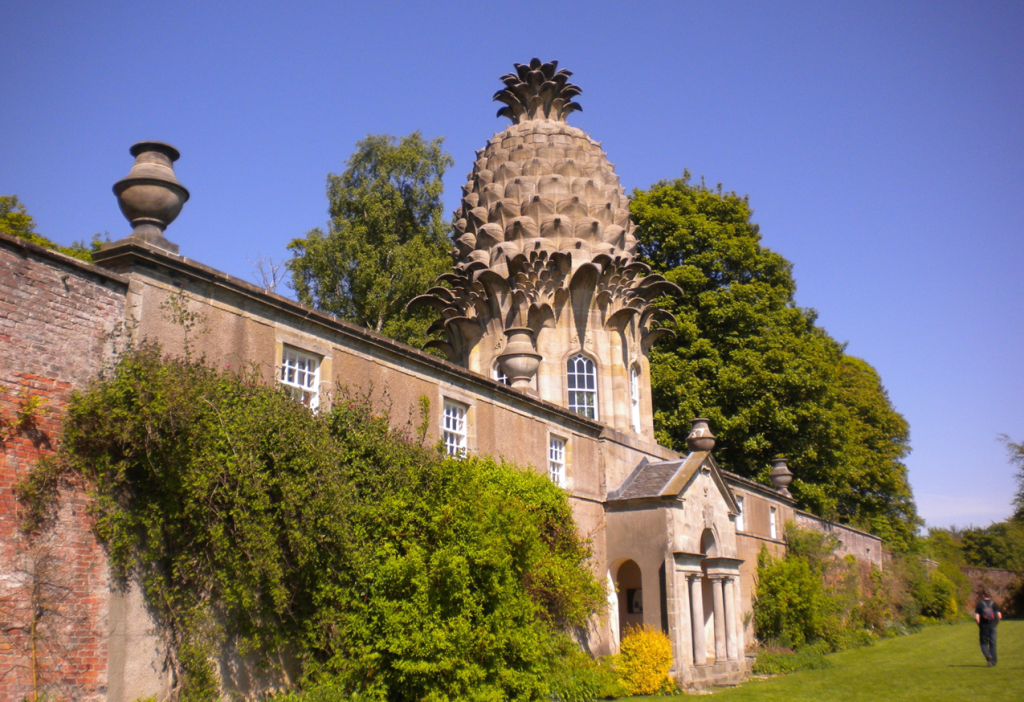
Pineapple Castle (or just ‘The Pineapple’), built by the Earl of Dunmore near Airth in Scotland, is best known for its giant pineapple-shaped cupola which crowns the building.
Constructed in 1761, the building blends elements of classical architecture with this quirky twist, and reflects the symbolism of hospitality and wealth during that era.
The Pineapple is one of several ‘follies’ – decorative buildings of no functional use built by wealthy landowners mainly during the 18th and 19th centuries – on this list.
It never had a military purpose – it was constructed as a garden retreat – leaving its original owners able to include this strange addition, no doubt to amuse and impress their friends. Pineapples were seen as an exotic fruit in Scotland in the 18th century.
Today, the castle is managed by the National Trust for Scotland and part of a well-maintained garden estate and is a lovely place to visit.
In the 1930s, the castle underwent significant refurbishment in the Art Deco style by millionaire philanthropist Stephen Courtauld, adding stylish modern interiors while preserving the medieval structure.
Visitors can explore the remarkable Art Deco interiors, featuring stylish furnishings and innovative designs, all reflecting the glamour of the early 20th century.
Eltham Castle, London
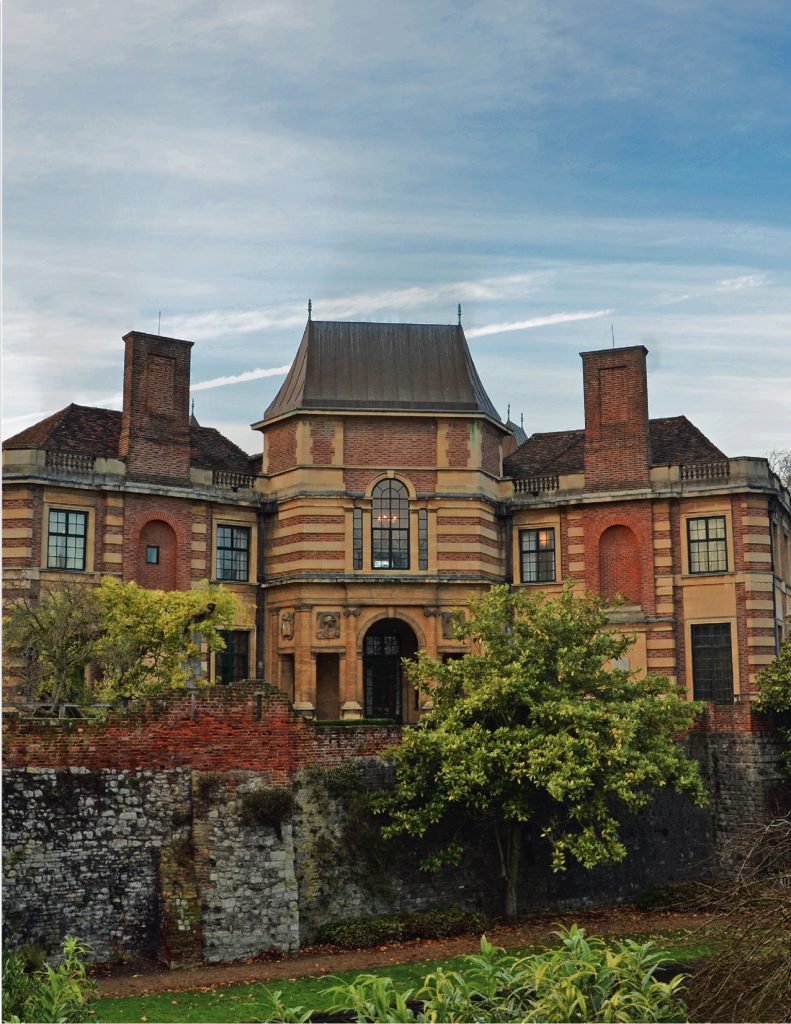
Eltham Castle, located in southeast London, UK, is a historic site that blends medieval and Art Deco architecture.
Originally built in the 14th century as a royal residence, it was a favoured royal palace during the reign of Edward IV and Henry VIII.
The medieval Great Hall, constructed in the 1470s, showcases a stunning The medieval Great Hall, constructed in the 1470s, showcases a stunning hammerbeam roof.
Castle Drogo, Devon
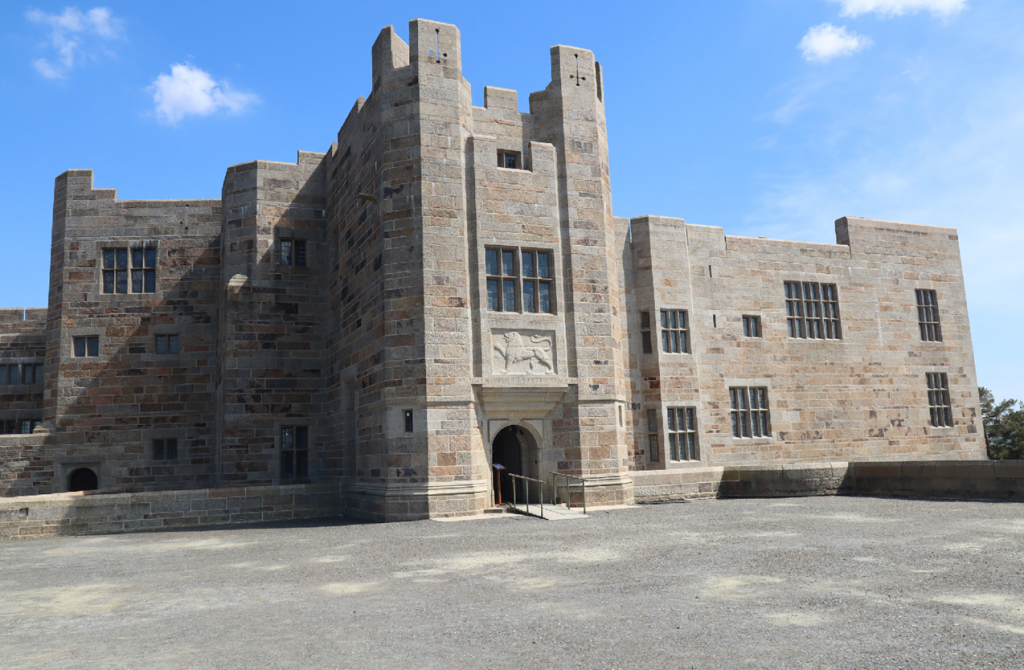
Castle Drogo is a unique 20th-century structure located in Devon, England. Designed by Sir Edwin Lutyens, this castle showcases a blend of medieval and modern architectural features.
Despite its relatively recent construction, Castle Drogo holds the distinction of being the last castle built in England.
Wimpole’s Folly, Cambridgeshire
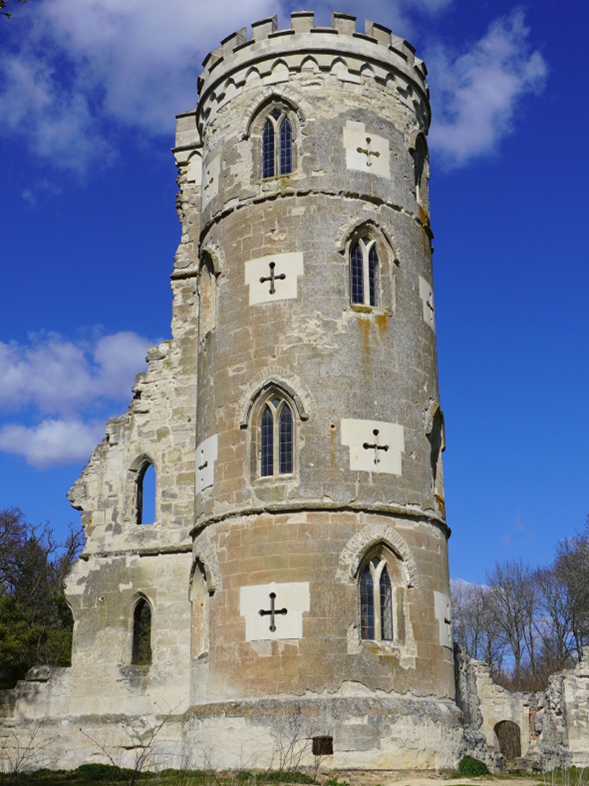
Wimpole’s Folly is another folly, as it’s name suggests, this time located within the grounds of Wimpole Estate in Cambridgeshire.
Built in the 18th century, this Grade II listed structure intentionally resembles a ruined medieval castle featuring towers, turrets, and battlements.
The building was commissioned by the eccentric Philip Yorke, 1st Earl of Hardwicke. Designed by architect Sanderson Miller, it was constructed between 1751 and 1767.
Like all follies, Wimpole’s Folly serves no practical purpose. It was created purely for aesthetic reasons, enhancing the landscape of the estate.
These elements aim to evoke the romanticism associated with genuine historical ruins.
Visitors to the Wimpole Estate, maintained by the National Trust. can explore the folly along with the surrounding parkland.Wimpole’s Folly serves no practical purpose. It was created purely for aesthetic reasons, enhancing the landscape of the estate.
Visitors to the Wimpole Estate can explore the folly along with the surrounding parkland. It is maintained by the National Trust.
Still, it remains accessible to the public, offering a unique insight into the whimsical tastes of the period.
Kelburn Castle, Scotland
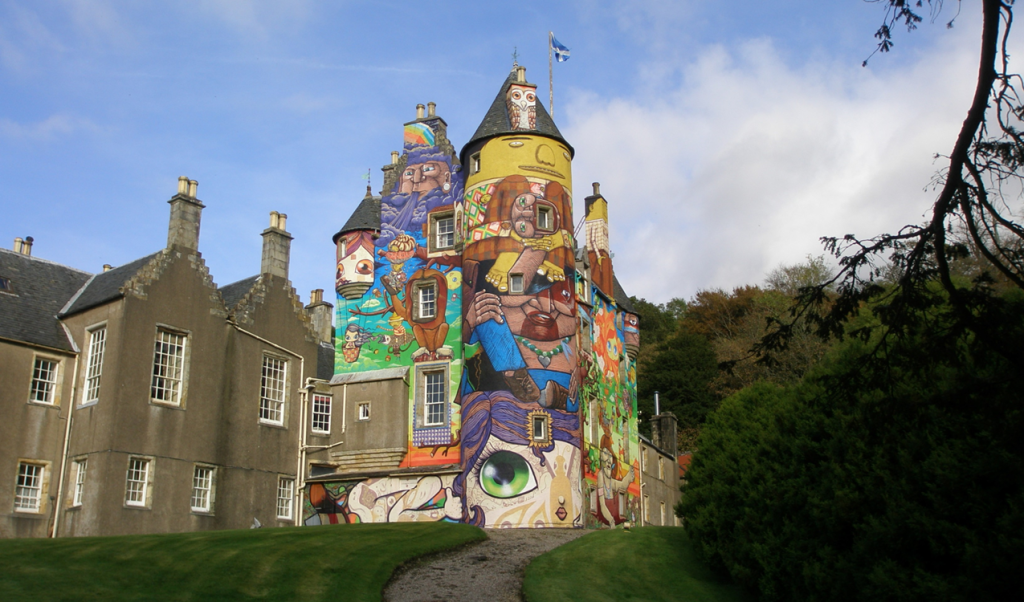
We’re not too sure about our last unusual castle.
Kelburn Castle, located in Ayrshire, Scotland, has a history back from the 13th century and is the stronghold of the Earl of Glasgow. Originally built as a defensive structure, it underwent significant changes in the 16th century. The architectural style reflects typical Scottish baronial elements, designed for both defense and residence.
It is therefore a lovely if unremarkable castle in a land with many such structures.
However it was decided to enliven the place and during a 2007 restoration modern graffiti art was added its outer walls. This initiative aimed to preserve the castle while engaging contemporary art. Four Brazilian street artists were commissioned to create this artwork, adding vibrant life to its ancient walls.
The result was a colourful mural including striking patterns, characters, and symbols, blending elements of ancient architecture with modern art.
To say that it received a mixed reception is an understatement – some loved the modern take on a stuffy old Scottish castle, others muttered words such as vandalism and eyesore.
Anyway, whatever your view it’s well worth a visit.
